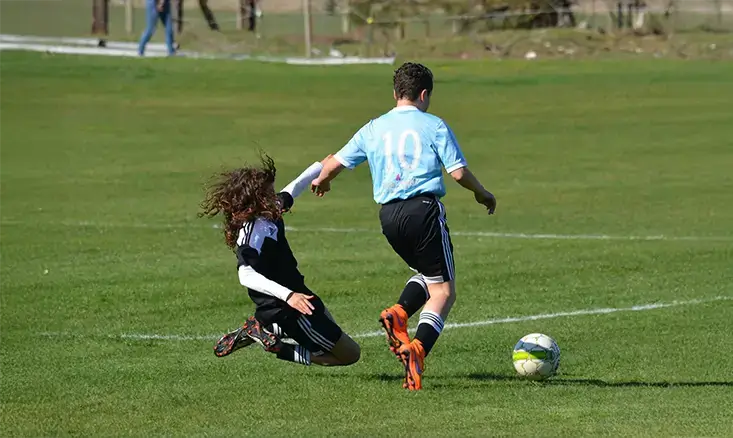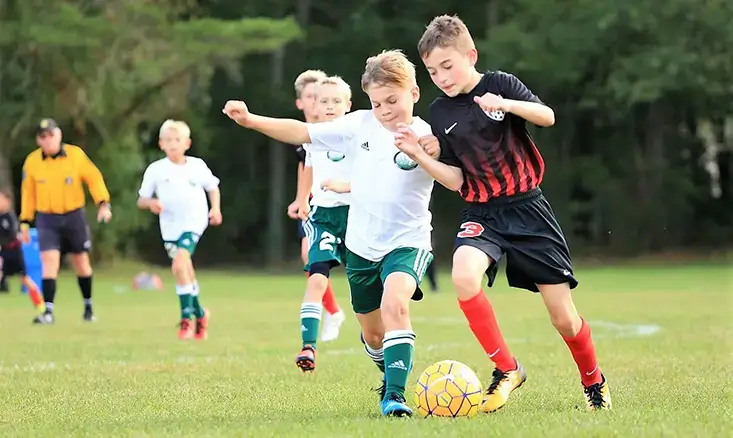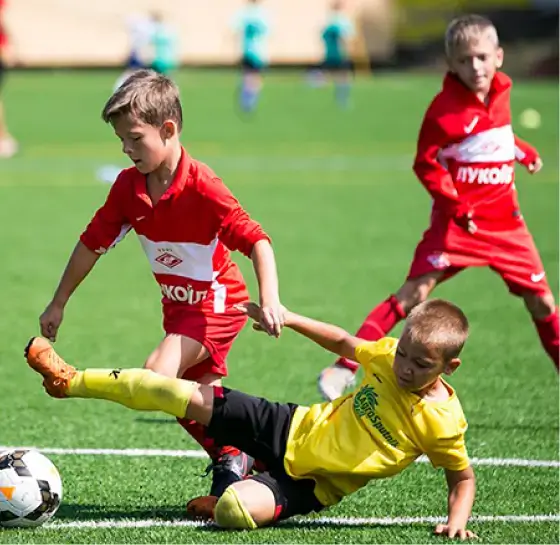CRFC BLOGS
LATEST BLOGS & NEWSLETTERS
Youth Soccer Foul Rules: Everything Parents and Players Need to Know
Understanding Youth Soccer Foul Rules
Why Are Youth Soccer Foul Rules Important?
Youth soccer foul rules are designed to create a positive environment that promotes both physical and mental development. They encourage fair play, help young players understand the value of respect, and build a foundation of sportsmanship. Foul rules also help prevent injuries, ensuring players can compete safely.
By following these rules, players not only learn soccer skills but also valuable life skills like discipline, respect, and self-control. Coaches, parents, and referees all play a role in teaching and reinforcing these rules, helping young athletes enjoy the game and develop as individuals.
Types of Fouls in Youth Soccer
Fouls in youth soccer can be divided into four main types. Each type of foul has its own penalties, depending on how it affects the game.
1. Minor Offenses
Minor fouls are small rule violations that don’t involve physical contact but can still interrupt the game. These fouls usually result in an indirect free kick for the opposing team. An indirect free kick means that another player must touch the ball before it can be kicked towards the goal. Minor offenses include obstructing an opponent without making contact, time-wasting, or certain types of unsporting behavior that don’t involve rough play.
2. Major or Direct Fouls
Major fouls, also known as direct fouls, are serious rule violations that typically involve physical contact. When a major foul is called, the opposing team is awarded a direct free kick or, if the foul happens in the penalty box, a penalty kick. A direct free kick means the team can kick the ball directly towards the goal without it needing to touch another player first. Common examples of major fouls include:
- Kicking or attempting to kick an opponent
- Tripping (using the leg to make another player fall)
- Pushing (using hands or body to move another player)
- Holding an opponent
- Running or jumping into an opponent
Major fouls are more heavily penalized because they can lead to injuries and disrupt the game significantly.
3. Technical Fouls
Technical fouls are violations that often involve specific rules or actions rather than direct physical contact with an opponent. For example, a foul throw (improper throw-in) is considered a technical foul. Other technical fouls may involve violations by the goalkeeper, such as holding the ball for too long. These fouls often result in an indirect free kick for the other team.
4. Disciplinary Fouls
Disciplinary fouls involve unsporting behavior or repeated rule-breaking and can result in yellow or red cards Ru. The referee may issue a yellow card as a warning for behavior that disrupts the game, such as arguing with the referee or repeatedly fouling opponents. A red card is given for serious offenses like violent conduct or if a player receives two yellow cards in one game. A player who receives a red card is expelled from the game and cannot be replaced by a substitute.
Understanding these types of fouls helps young players avoid actions that could result in penalties and keeps the game enjoyable for all involved.

The 9 Major Fouls in Youth Soccer
In youth soccer, nine specific actions are classified as major fouls. These fouls result in a direct free kick or a penalty kick if they happen in the penalty box. They are:
- Kicking an opponent
- Tripping an opponent
- Jumping into an opponent
- Pushing an opponent
- Tackling from behind
- Holding an opponent
- Contacting an opponent before touching the ball
- Deliberate handball (except by the goalkeeper in their penalty box)
These fouls are considered more dangerous or unfair, so they are penalized more strictly to maintain the game’s integrity and safety.
Key Youth Soccer Foul Rules and Penalties
Youth Soccer Foul in the Box Rule
One of the most important youth soccer foul rules is the rule regarding fouls in the penalty box. If a defending player commits a foul inside their penalty box, the opposing team is awarded a penalty kick. Penalty kicks are significant scoring opportunities, so defenders must be cautious about fouls in the box.
Youth Soccer Last Defender Foul Rule
The last defender foul is a rule that applies when the last defender commits a foul to stop an attacker with a clear chance of scoring. This foul can lead to a red card and expulsion, as it is considered an intentional move to stop a scoring chance. The last defender rule encourages defenders to play fairly and avoid illegal actions to prevent an easy goal for the other team.
Youth Soccer Foul Throw Rule
In youth soccer, throw-ins must follow specific guidelines. When a player incorrectly performs a throw-in (such as lifting one foot, throwing the ball incorrectly, or not placing both hands on the ball), it is considered a foul throw. The opposing team is then awarded the throw-in. Coaches and parents can help young players learn proper throw-in techniques to avoid this common mistake.
Penalties and Discipline Cards in Youth Soccer
Referees use yellow and red cards to manage discipline on the field:
Yellow Card
A yellow card warns forunsporting behavior, delaying the game, or repeated fouls. A player who receives two yellow cards in a game is automatically given a red card.
Red Card
A red card means the player must leave the game immediately. It is given for serious fouls or unsporting behavior, such as violent conduct or receiving a second yellow card. When a player receives a red card, they cannot be replaced, leaving their team to play with one fewer player.
These disciplinary cards help referees manage players’ behavior and ensure the game stays respectful and fair.

Goalkeeper-Specific Foul Rules in Youth Soccer
Goalkeepers have special foul rules due to their unique role as the only players allowed to handle the ball within the penalty area.
Holding the Ball Too Long
Goalkeepers can’t hold the ball for more than six seconds. This rule prevents goalkeepers from unnecessarily delaying the game.
Illegal Re-touch
After a teammate deliberately passes or throws the ball to the goalkeeper, they cannot touch it with their hands. This rule prevents teams from unfairly passing the ball back to the goalkeeper as a defensive tactic.
Understanding these specific rules helps goalkeepers know how to avoid penalties and ensures fair play.
Conclusion
FAQs
What is considered a foul in youth soccer?
A foul in youth soccer is any action that unfairly disrupts an opponent’s play, like pushing, tripping, or improper throw-ins. Referees call fouls to keep the game safe and fair.
What happens if a player commits a foul in the penalty box in youth soccer?
If a defending player fouls inside their own penalty box, the opposing team is awarded a penalty kick. This gives the attacking team a direct chance to score, with only the goalkeeper defending.
What are the nine major fouls in youth soccer?
The nine major fouls include actions like kicking, tripping, pushing, jumping into an opponent, tackling from behind, holding, and deliberate handball (except by the goalkeeper). These fouls can lead to free kicks or penalty kicks.
What is a yellow card in youth soccer?
A yellow card is a warning for unsporting behavior or repeated fouls. If a player receives two yellow cards in one game, they are shown a red card and must leave the game.
Can goalkeepers get called for fouls in youth soccer?
Yes, goalkeepers can get fouls if they hold the ball for more than six seconds or if they touch the ball with their hands after a teammate’s pass or throw-in. These rules help keep play fair and prevent time-wasting.

Did you find this useful?


